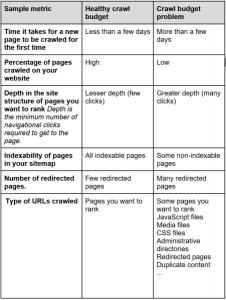The founders and leaders of Brooklinen, Hatch Collection and M.M. LaFleur discuss building their brands and how they’re creating customers for life.
The hottest segment in retail is direct-to-consumer (D2C) brands. It’s also very competitive and quickly evolving, from online-only to multi-channel, with many companies adding physical stores to maintain an edge and continue growing.
Three D2C leaders, Rich Philip, co-founder and CEO of Brooklinen; Arianne Goldman, founder and CEO of Hatch Collection; and Justin Hughes, chief product officer of M.M. LaFleur, spoke about the evolution of their direct-to-consumer businesses during a session I moderated at Yotpo’s recent D2C conference in New York.
We discussed the nature of brands today, how to build loyalty, what marketing channels are most effective, the value of stores and the best advice they’ve received. Below is a transcript of our discussion, which has been edited for length.
Does brand loyalty exist anymore? Yes, but . . .
Greg Sterling: Survey data argue brand loyalty is in flames and that Millennials are much less loyal than earlier generations. What’s your response to this?
Rich Philip: I think the onus is on the brands very heavily these days because there’s a ton of competition. You need to put a lot of emphasis on creating a brand that people desire and want to be a part of for as long as possible. And that puts pressure on brands to keep evolving, to keep innovating, to keep having a new offering that’s enticing to customers. I disagree that brand loyalty is wavering. I think if you have a good product and a good brand experience, people will stick with you. You just have to do right by the customer.
Arianne Goldman: I totally agree. Hatch is a company for women who are pregnant, which can see you through your journey before, during and after pregnancy. The conversation and the trust developed with the customer is key. Loyalty is critical to success and to actually meaning something to people, which is kind of my definition of what a brand should be.
Justin Hughes: M.M. LaFleur is a direct to consumer women’s fashion brand for women that are busy and purposeful. I would say that our consumers aren’t cynical. As you look at the younger group of customers that we have coming through, I would say they’re more mission-oriented. They’re looking for something to come out of the brand. They want you to be meaningful. They want you to be sustainable. And that’s what’s driving them. They’re looking for more social proof. If they don’t get that, they’re going to move away from the brand.
Arianne Goldman: I think following a customer on their journey, knowing what they want and providing things that continue to bring them back. And letting them know that you understand what they’re going through and that you’re just not just selling stuff, you’re actually in it to be their partner through this moment or whatever moment they’re going through.
In my case, it’s a little different because I am obsessed with following the woman on her journey. So that promise to stick with her is quite different from the competition. A big box retailer might have a maternity category, but it’s not their sole focus. Hatch focuses on the woman. I gained her trust not only through great product, but by really evolving into community and letting her know that she can trust us, not just for a beautiful pair of pajamas, but also for a doula connection, or whatever, as well.
How to make (their) brands stand out
How would you describe the personality or essential characteristics of your brands? What helps them stand out?
Rich Philip: We think about the brand as a person all the time. We want to be that nice person that you’d like to be around — not that annoying person, or that abrasive person but somebody that is generally enjoyable. It comes across in the communication and giving good advice. People ask us all the time: My room is this color what do you suggest I do? I live in Minnesota and it’s really cold; what do you think I should go buy? And I think that’s a differentiated experience from our competition or the big-box stores, the department stores that don’t offer any kind of help or personalization or guidance. So if you really just take care of the customers and listen closely, then you can do right by them and that’s how you keep a customer for life because you keep servicing them on that level.
Justin Hughes: When we talk about our brand we want to make it both practical and charming at the same time. That’s a really tough intersection to hit, especially when you don’t often get to talk to people face to face in a store. We just opened up in Brookfield place, a little bit down the river, and it’s a pit-stop for women who may have spilled something on their clothes, or the office is too cold and they want to pick up a sweater, or they just want to sneak away and get a glass of rosé in the middle of the day. We try to be practical and be there for them, and be a little fun too.
Customer engagement starts with instilling connection, regardless of channel
Picking up on the idea of the customer conversation, how do you engage with the customer, through what channels: email, social media? Are you doing surveys? Tactically, what are you doing?
Rich Philip: Every channel you mentioned and then live in our brick and mortar experience. We had a pop up earlier this year and we’re opening a permanent store. But it actually started from the very beginning for us. My wife and I co-founded the company and bootstrapped it for two and a half years. We both did almost everything when we started, including customer service. You get a lot of insight by doing customer service.
We actually bake that into our employee onboarding process. Regardless of level or department, everybody does customer service for two weeks when they start at our company. The philosophy behind that is, regardless of your department or role, you can learn something that’s applicable to your team.
Arianne Goldman: Similarly, I bootstrapped the company for the first five years and really had a chance to take the brand on the road and build it organically. We were doing trunk shows and partnering with key influencers in-market and with some retailers. Women were spending 2X to 3X in-person that they were spending online. It was really that customer interaction, which definitely informed me that brick and mortar would be part of the greater strategy for Hatch. But engagement comes honestly, you can kind of pay for it at the top, but we’re also building it from the bottom: grassroots of meeting people, focus groups, talking to women about what is missing from their lives, what more can we provide them. Then we’re getting in front of them physically to make it more of a touch and feel experience.
Email is about 35% of our revenues. Having that conversation on a weekly basis, several times a week, keeping that conversation fresh and not boring is challenging. But it’s a real opportunity for us; you have to be saying things that are relevant and that matter to keep them engaged.
Justin Hughes: Talking face to face is really important. We always try to use engagement opportunities as a means to create community. Community is something we try to foster as much as we can. If we’re talking to you, chances are that somebody else in the community who’s buying from M.M LaFleur also has the same question or the same thought. And we try to turn that into an opportunity.
Every week we do a “women of the week,” where we take one of our customers and tell her story to the rest of the community. We foster community groups or dinners at our showrooms, so people can tell their stories and learn from each other — so it’s not just about us, it’s about the consumer as well.
Maintaining customer experience at scale
In the beginning, as you mentioned, there’s a lot of hands-on time. As the company grows it becomes harder to deliver the kind of high-touch experiences you’re describing. Talk about how scale has impacted your thinking about how to deliver the best customer experience?
Rich Philip: We have a lot of tools and solutions that have kind of evolved over time. I’ll start with customer service. Customer service is so critical to our business. I just want to take care of every customer and every interaction. When you hear similar questions, similar things all the time, it gives you an opportunity to automate and optimize on that.
We have several tools, AI tools that help us on the customer service side. One of those tools does the work of a few CS reps on its own for us, and it’s become very impactful to answer questions. On the website, I put a lot of pressure on our team and our e-comm team because we strive for segments of one person. Personalization is how you create the relationship with the brand. So if we knew that you bought this or you were on that page, you have a very high likelihood to take another action. And if we lean into the data, then we can really service the customer and give them something they really like.
Arianne Goldman: I’m looking at it inside-out when I think about growing the business. It’s about people first, not necessarily tech first. Building community is about how do I get in front of more people physically and personally? That to me then translates into greater revenue growth.
How to deal with customer experience missteps — and the dangers of social media
What happens when you mess up? How do you handle bad personalization or a bad experience? Give an example of what you did in response to the worst screw up you can remember.
Rich Philip: We make it right at all costs. I don’t want people going out to social media or on our reviews and just skewer us for something. A story that we tell all the time is, we lost this woman’s package and it was a Christmas present. It was like an hour and a half east of Long Island. And this was like December 23, two years ago. She went crazy on us that we lost her Christmas gift. So we put a replacement in an Uber — a $150 Uber ride — and sent it out to her. And she wrote us this long essay about how we saved Christmas for her family. That’s a customer for life, and she has been. Those kinds of little experiences really make the difference and show what a brand with a personality will do that the big box store or the department store wouldn’t do.
Arianne Goldman: Before starting Hatch, I worked at American Express for about nine years, and the card member was always right. I took that into my own company; the customer is always right. The goal is to make sure our customers feel good and happy and at any cost, making sure that their experience is protected. It’s a little more challenging for me because I’m dealing with hormonal women who really have no idea what the hell is going on in their life. So they tend to bark at us a little bit more than usual. But at the end of the day, she’s always right. What can we do to just make this experience better for her?
Justin Hughes: It’s the same for us and we always try to inject personal communication into everything we do as well. We have a lot of customers and it’s difficult when there’s a screw up because it will affect thousands of people. We always try to make sure that one of us on the executive team is always stepping in as much as we can to talk to customers directly. No matter how big the company grows we always have a touch-point and will be able to do that.
Rich Philip: One more thing; social media is a very dangerous weapon that’s out there right now. Everybody has a megaphone that they can broadcast your screw ups to everybody, and it’s dangerous. You don’t want to play with fire. So that’s why it’s worth whatever the cost is to correct those and turn the negative experience into a positive one.
Stores promote the brand in a way online cannot
Speak to the role of physical stores: important, sort of important, critical to your future?
Rich Philip: Very important to our future. Hasn’t been up until now. We’ve done a lot of work on the e-comm side, but for the next phase it’s very important.
Arianne Goldman: Critical to the future. I have two stores now. We’re going to roll out a few more in the next 18 months. But we’re not really looking at them just as stores, but as community retail experiences so that we can build the community and sell stuff simultaneously, but not just sell stuff.
Justin Hughes: They’re important for us as well. We have seven stores plus our popups, and they’re a critical touch-point to get to know our customers and foster that sense of community. They’re very difficult to scale. So, on the revenue side, they’re a fraction. We’re still trying to work out what that model really looks like so we can take that next step.
Rich Philip: Stores promote the brand in a way that online has trouble doing, I think.
Social media has become 4X more expensive
What’s the most effective channel or channels for you, and is digital getting expensive?
Rich Philip: Word of mouth referral and depends on the channel. Some channels are too expensive.
Justin Hughes: Social has gotten 4X more expensive over the past four years, and so actually we’ve been shrinking that as percentage. We’ve also been going back to traditional media, direct mail, doing events. A lot of that has been working a lot better than it had been over the past 10 years. And then of course influencers have taken over a larger percentage of our budget and time, especially as we’re tracking younger consumers today.
Arianne Goldman: Yeah, I’d say going old school and just building a brand from ground-up is going to be the sweet spot that’s going to differentiate you from everybody else.
Best advice they ever got
Finally, what’s a lesson learned or the best piece of advice you received?
Rich Philip: Somebody told me this early on, tomorrow is going to be more difficult than today. It’s super true. Watch out.
Justin Hughes: The best advice I’ve ever gotten was success breeds success. If we ever feel like we’re trying to chase after an idea, it’s probably the wrong one. We take a step back to try to look at a framework for us to get to the right answer and learn over time.
Arianne Goldman: The the best advice I got was always have a sense of humor because it just doesn’t end. It’s a big, big beast, and if I knew then what I knew now, I probably wouldn’t have done it.
Marketing Land – Internet Marketing News, Strategies & Tips
(30)





